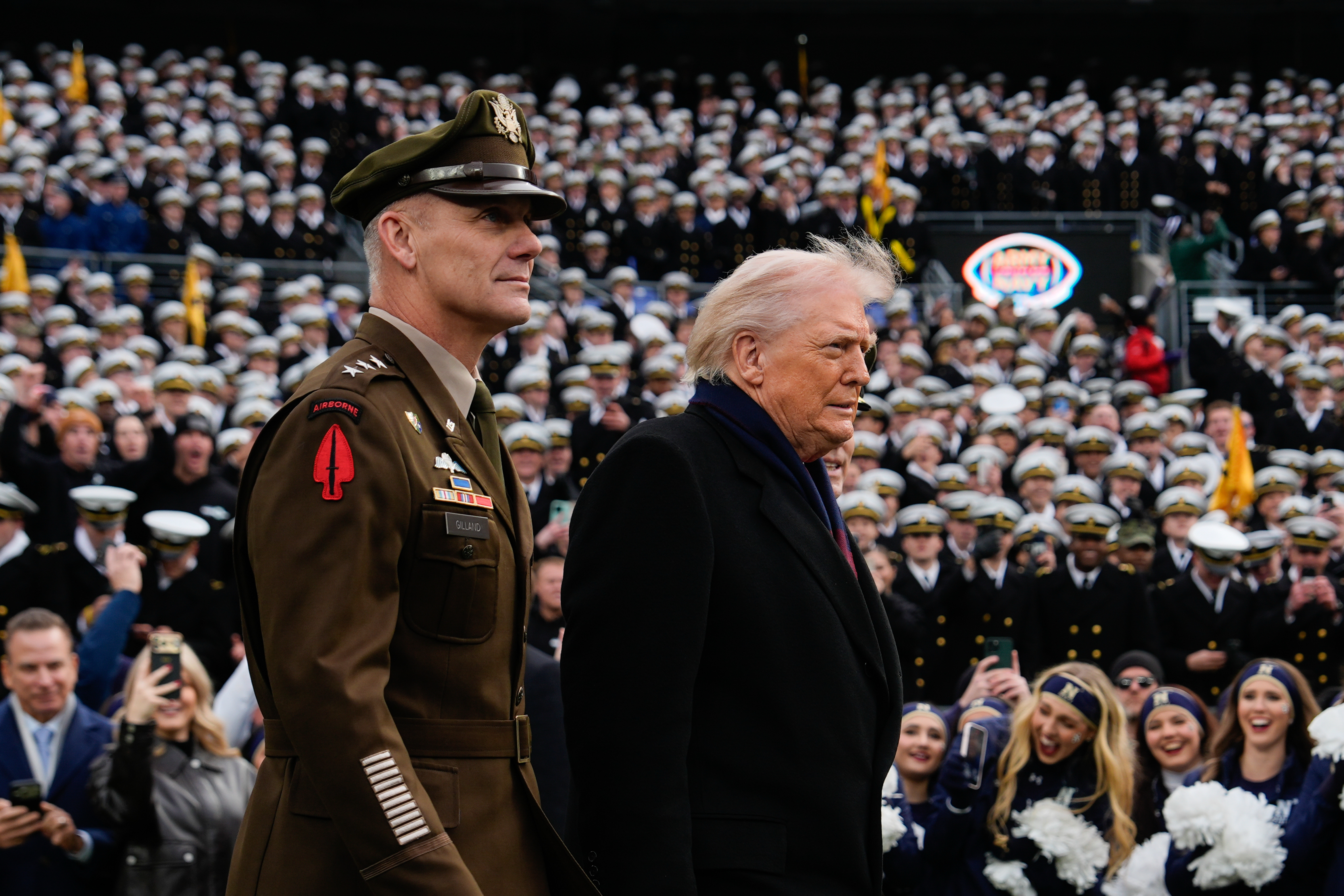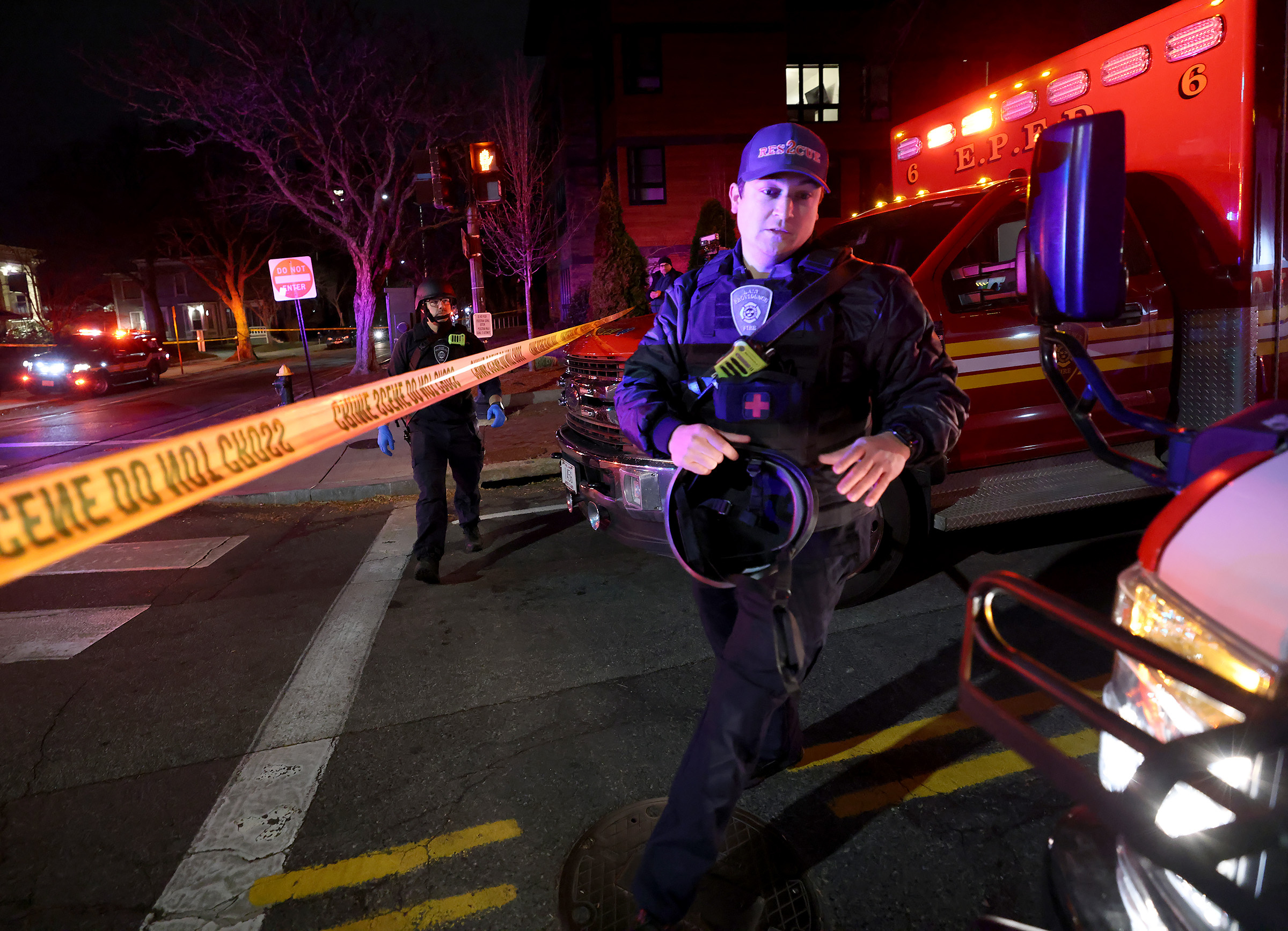Arizona Secretary of State Adrian Fontes remembers the first time he saw himself as a deepfake video.
"It was creepy," said the Democrat who oversees elections in one of the most-watched swing states in the country.
The advances in generative artificial intelligence and deepfake videos prompted Arizona's top election official to convene more than 150 election workers from around the state in December for two days of tabletop exercises — created alongside the Brennan Center for Justice, the Elections Group and the Institute for the Future — that addressed threats to elections. They ran through dozens of different scenarios of things that could go wrong in the lead-up to an election and on election day. Many of those situations involved advances in technology that allow a voice, image or video to be recreated and shared without a person's permission.
Fontes recently recreated that training for the press, inviting reporters from around the country to Mesa for a daylong training that mimicked what election workers experienced.
After grabbing coffee and mingling with other reporters and facilitators on-site, our day started with a fake, but highly convincing video of the secretary of state himself. A realistic rendering of Fontes loomed over the presentation screens in the ballroom where activities were staged. A large label is splashed on the upper right-hand corner: "AI-generated for educational purposes only."
"This is an impersonation of Arizona Secretary of State Adrian Fontes using generative AI. Our goal is to make sure folks understand the capabilities of current deepfake technology and the dangers it poses to the public," said the fake Fontes, sitting behind a desk in what looks like an office.
This video is why he holds these tabletop exercises: They mimic realistic scenarios that election officials could face. They threw Scripps News and others in the press into two fast-moving simulations — acting as if we were election officials. Our goal? Keep the elections running smoothly.

Artificial Intelligence
How to tell the difference between a deepfake video and a real one
We were guided by Pinal County Recorder Dana Lewis and Sierra Ciaramella from the Maricopa County Recorder's Office as we fortified our hypothetical county, called Climate County, from election threats and fielded questions from mock reporters who wandered the room with microphones. The next several hours were chaotic: Countdown clocks whizzed us through the leadup to election day as we bought fortifications for our election system, like website firewalls and dual-factor authentication. There were also physical security components to consider, like securing the tabulation room and increasing the budget for staff security. And plenty of scenarios — "injects" as they're called — popped up for us to consider: We must answer a local news reporter's questions about an AI chatbot that's spreading incorrect information. Another situation that popped up was: Word is spreading that there is a ballot drop box at a strip club, even though the drop box map shows no such location. That's another example of disinformation to debunk.
The takeaway from the presentations and exercises was that a lot of the technology demonstrated can be used in malicious ways that could impact elections — and not just elections in Arizona. According to two AI experts who addressed the room, deepfake video- and voice-cloning technology is cheaper and easier to use, meaning these types of election interference can be used in any county across the country.
Lewis, the Pinal County Recorder, recalled how her experience with this training several months ago changed her approach to what she posts online. She, like Fontes, had agreed to have her likeness turned into an AI-generated video based on just a 30-second clip she recorded.
"It was interesting. I think the voice was spot on. I think because it was AI, some of my facial features were definitely a little bit excessive," she said. "However, my understanding is, we did that about six months ago. Where they're at with AI already, is past that. That's how fast this is growing."

Social Media
TikTok begins labeling AI-generated content
One technology expert who presented to the group agreed. Toshi Anders Hoo, director of the emerging media lab at the Institute for the Future, explained how large language models and deepfake technology work — and demonstrated some of the uses of artificial intelligence. With Election Day less than six months away, Hoo said the pace of technological development is hard for him to keep up with.
"It's my job to research this and track this technology and I wake up every morning and my head is spinning. It's moving that fast," Hoo said, warning about what may be coming by November, which he said could be AI bots or artificial intelligence at an enormous scale.
"I'm showing individual examples here, but the ability to do this at scale is what I think is going to be overwhelming," Hoo added.
In a one-on-one interview with Scripps News, Fontes said the scenarios the press experienced are universal. Phishing emails, robocalls, or armed protests are things that have already happened around the last few elections.
"Not a lot of this is brand new stuff, but we want to just kind of train our folks to make decisions under pressure," Fontes said, adding that he's still focused on the fundamentals of election administration.
"They still gotta run the election. They've still got to make sure that all the voters are treated well and get their ballots cast."
But Fontes stressed the point of the training is to make not only election officials aware of potential election security threats posed by AI, but also to educate the press and public.
"This wasn't something that we had imagined doing a year ago, but as we saw these threats emerge, we realized talking to the public really involves the press a lot," Fontes. "We figured we're going to teach you guys about our processes, make sure you understand it so that if something does happen, you'll already have a foundational understanding of the way we run elections in Arizona."











